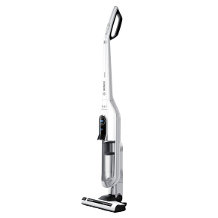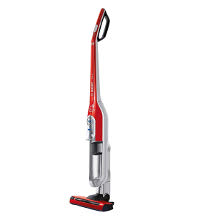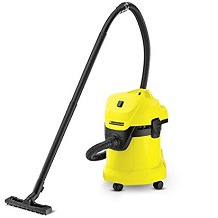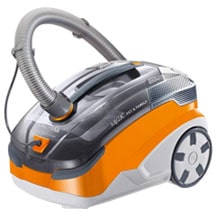Vacuum cleaner purchasing advice: how to choose the right product
- What you need to know
- Everyone’s home gets dusty, and dust can cause problems with electrical appliances, as well as exacerbate allergies.
- Vacuum cleaners come in different designs and sizes, and you can even get automatic robot cleaners nowadays. The best model for you will depend on the space you are vacuuming and how you prefer to clean it.
- Models with replaceable dust bags are still the most common on the market, but you can also get bagless vacuums for both wet and dry vacuuming.
- The most important factors to consider are the energy efficiency, suction power, noise, and dust emission.
- Look out for safety features like automatic standby and overheating protection. Some models also have quality of life features, like monitors that indicate how full the vacuum bag is or when you need to change the filter.
House dust is everywhere
No sooner have you vacuumed, the dust is back again, lurking in corners and covering surfaces. It sometimes feels like it’s everywhere, with a firm grip on your own home and nothing you can do about it. So what exactly is house dust, and where does it come from?
What is house dust made of?
House dust is comprised of various organic and inorganic substances. The ratio of this mixture depends heavily on whether you have any pets at home. In general, house dust comes from the following sources:
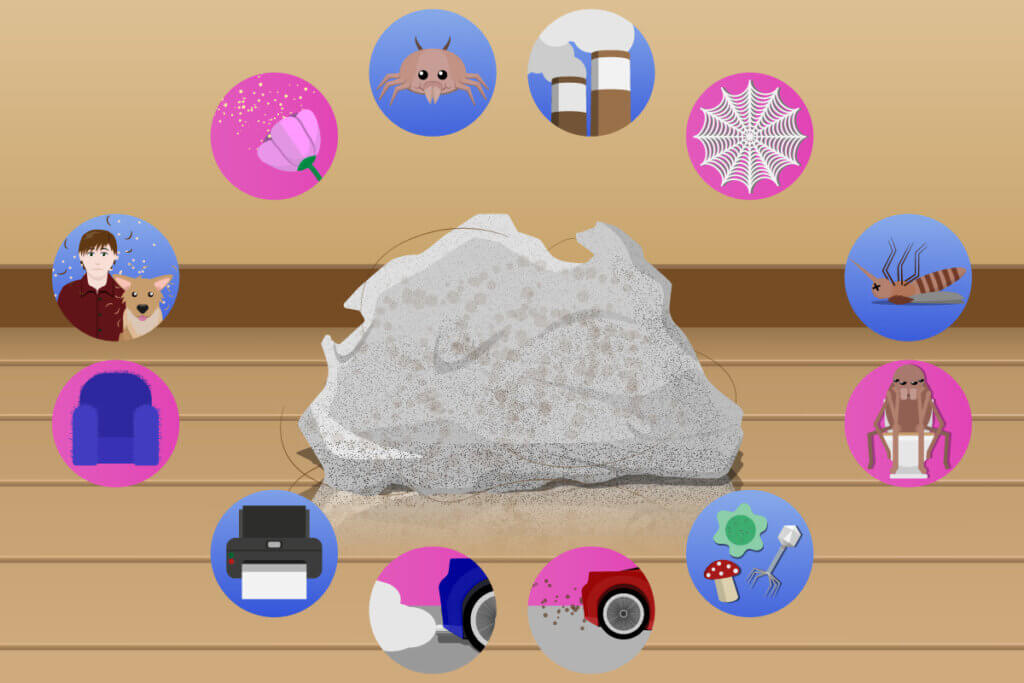
As a rule, roughly six milligrams of dust accumulate per square meter (about 10,8 ft²) of living space every day. Some of it comes in through open windows, while the rest is actually produced by humans: about 80% of house dust on furniture is made up from flakes of skin. The dust you find on the floor tends to come from hair (both human and animal) and particles that come in on shoes or paws. This process invites some unwanted guests: dust mites reproduce quickly, especially in bedding and mattresses, but also in upholstered furniture.
Dangers of house dust
When dust builds up it doesn’t just look gross, it can also cause real dangers. Electrical appliances that radiate heat – such as computers and televisions – can accumulate dust, which can in turn damage the electrics and even cause fires.
Dust mite excretions are a trigger for allergies. It’s estimated that up to 10% of the world’s population suffer from dust mite allergies. One of the best ways to combat this is to regularly vacuum using a HEPA filter.
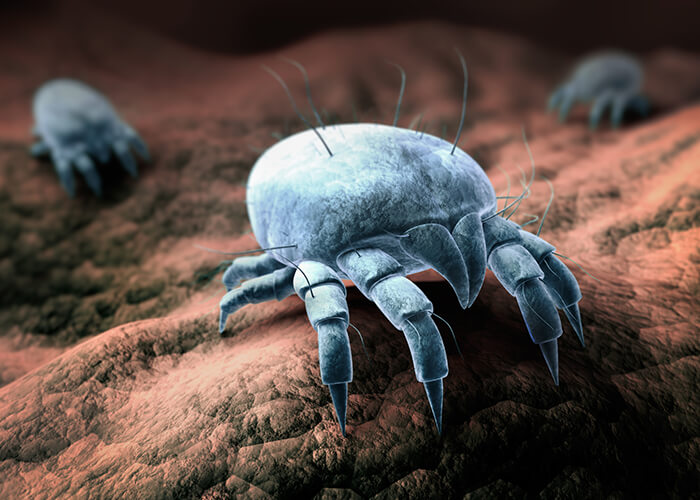
From massive to tiny – types of vacuum cleaners
For lots of us, vacuuming is one of the least loved household chores – especially when it feels like the floor isn’t much cleaner afterwards than when you started. As such, it’s essential for any vacuum cleaner to reliably clean the floor.
The first vacuum cleaner
The first vacuum cleaner was called the “Carpet Sweeper”. It was created by Anna and Melville Bissell in 1876 in Grand Rapids, Michigan, USA, who brought it door to door on a horse-drawn cart, pumping dust out of their customers’ homes by hand. The American inventor James Murray Spangler patented the precursor of the modern vacuum cleaner with suction and a rotating brush with the Hoover company in 1908. It took until the 1950s and 1960s for the now familiar portable upright vacuum cleaner to finally become widespread.
The practical everyday helpers come in a large range of different designs, which differ primarily in terms of how they collect dust and how they work. Which vacuum cleaner is right for you depends on your personal requirements.
In a nutshell: vacuum cleaners for all requirements
Cylinder vacuums are suitable for all households – they provide the most comprehensive and thorough cleaning performance. They come in lots of sizes, with different filter systems and versatile accessories, which is why you’ll be able to find a suitable model whether you live in a studio flat or a multi-story mansion.
Handheld vacuum cleaners are a practical additional device for getting rid of small messes like crumbs on the sofa or dirty floor mats in your car – they aren’t an essential home appliance but can be very useful for smaller jobs.
Upright vacuums are an easy to use option for larger apartments and houses – most are battery-powered, making them especially portable. They’re also a space-saving alternative compared with clunky cylinder vacuums, particularly if you don’t have lots of carpets that need vacuuming.
For busy modern life, robot vacuum cleaners are real household helpers. They scurry across the floor every day and clean it automatically, so you won’t need to manually vacuum quite as often – a valuable (if expensive) time-saver.
Read on for a detailed introduction to each type of vacuum cleaner, along with their respective advantages and disadvantages, below. You can use this information to find out which type of vacuum really makes sense for you, what kind of filter you will need, and what kind of extra features offer real value.
All-rounder: cylinder vacuums
Cylinder vacuums are what you typically think of when you picture a vacuum cleaner. As a rule, these classic vacuums are connected to mains power via a cable. While you clean, you pull the unit across the floor with you as you hold the suction pipe and hose. Thanks to their strong and adjustable suction power, cylinder vacuums can handle coarse and heavy dirt particles. Capacity is usually very high, so you won’t have to change the dust collection container too often. Many models come with various suction attachments to make them true all-purpose machines: they can get into every corner, remove cobwebs from under the ceiling, and clean floors, upholstered furniture, or the interior of your car.
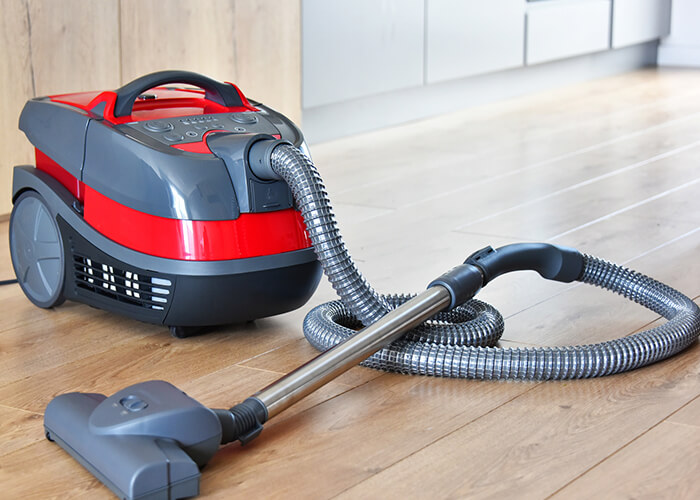
The downside of this design is that the operating radius is limited by the length of the cord and your distance to the nearest outlet – which can mean a bit of unplugging and replugging while running back and forth in larger apartments or houses. Another disadvantage: during vacuuming, the suction unit can bump into furniture, causing dents on wood or painted surfaces. Compared to all other vacuum cleaner types, cylinder vacuums require the most storage space and can be very loud.
Advantages
- Best cleaning performance
- Adjustable suction power
- Can be used on various surfaces with different attachments
- High capacity
- Corners easily accessible
- Suitable for all floor types
Disadvantages
- Reliant on power supply and thus cable length
- Loud in operation
- Require a lot of storage space
- Can dent furniture
Small helpers for short jobs: Handheld vacuum cleaners
Handheld vacuum cleaners are characterised by their space-saving design. The suction tube, motor, dust container, and blower unit are built into a compact housing that you can comfortably hold in one hand. As a rule, handheld vacuum cleaners are battery-powered small devices that do not require a dust bag. This means you can use them anywhere, but the payoff is that the performance and suction power is somewhat mediocre. Although there are also mains-powered handheld vacuum cleaners that offer consistently high performance and an even lower weight, they have the disadvantage of a limited operating range.
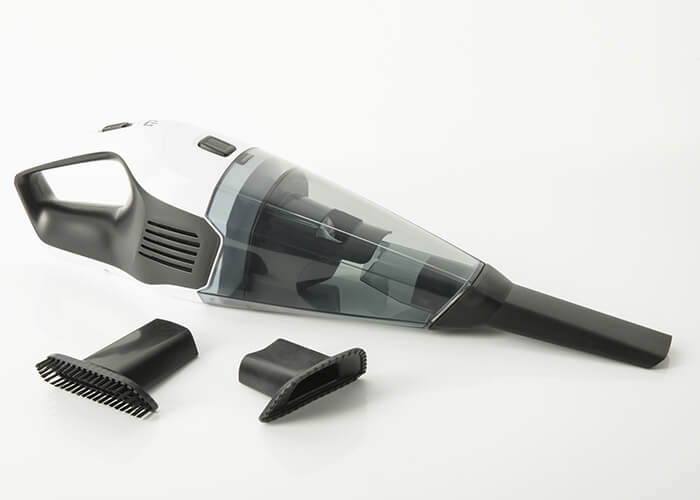
Thanks to various suction attachments, these handy devices are perfect for cleaning vehicle interiors. This said, they’re also great in the home. If you have pets or small children, the ease with which you can quickly clean up a mess is a big positive. As a result, you’ll often find these types of vacuums described as table or car vacuum cleaners.
The filter performance of these handheld devices often leaves much to be desired. They can eject up to ten percent of the fine dust again from the exhaust, which is why they aren’t a good option for people with allergies.
For hard-to-reach areas in the home or small amounts of dirt, handheld vacuums are the fastest and most efficient option. However, since cleaning larger floor areas with a handheld vacuum cleaner would require crawling, they are more of a complement than a replacement for floor vacuum cleaners.
Advantages
- Low weight
- Every corner accessible
- No dust bags necessary
- Quick to use
- Hardly any space required for storage
- Mostly wet and dry vacuum cleaner in one
- Comparatively low purchase price
Disadvantages
- Not suitable for cleaning large areas
- Low dust collection capacity
- Average suction power
- Mostly weak filter performance
Mobile compact devices: upright vacuum cleaners
This type of upright vacuum cleaner is sometimes also known as a stick vacuum cleaner. You can also get 2-in-1 units that convert into handheld vacuums when you remove the stick and brush attachment.
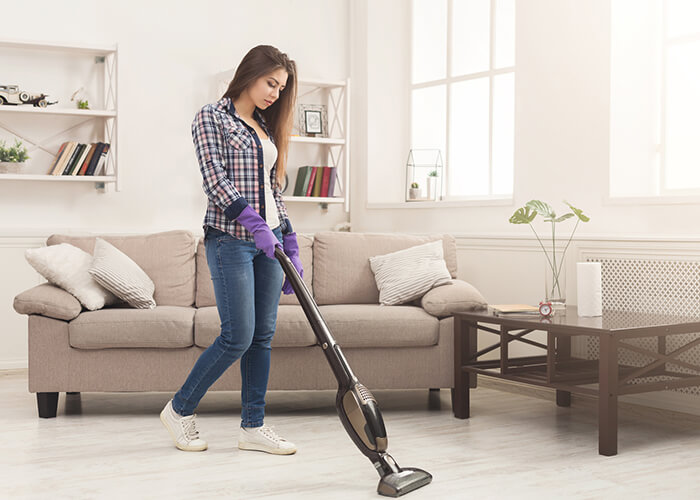
They have an elongated design, reminiscent of a broom or mop, which allows comfortable, back-friendly vacuuming while standing. Most models have a rechargeable battery, but you can also find versions with a power cable. Likewise, you can get bagless and bagged models.
As a battery-operated version, stick vacuum cleaners are very versatile – you can even use them overhead to remove cobwebs! However, this is more difficult than with conventional floor vacuums due to the higher weight on the suction tube. The dust collection capacity is also usually lower than that of floor vacuums. Suction power and deep-cleaning ability, especially on carpets, is also generally weaker than their larger competitors.
The compact stick vacuums are mainly suitable for floor cleaning for small apartments with little storage space or for quick cleaning sessions. Upright vacuum cleaners are an inexpensive intermediate solution, in other words, a handheld vacuum cleaner with an extended ability to clean floors.
Advantages
- Back-friendly vacuuming
- Little effort required
- Little space required for storage
- Often convertible to hand vacuums
Disadvantages
- Relatively low dust collection capacity
- Weak deep cleaning
- Lower suction power than floor vacuum cleaners
Independent little helpers: robot vacuum cleaners
Robot vacuum cleaners are a great option for busy modern life. They take over your chores during the day, so you return to a clean home at night. This said, they do have their own problems, particularly in terms of mobility.
Robot vacuums have sensors that they use to orient themselves in the room and measure the distance to obstacles. They draw their energy from a rechargeable battery, which they charge at a base station. Cleaning is performed by means of various rotating brushes or rollers equipped with rubber wipers. Robot vacuums are primarily suitable for smaller apartments with hard floors and little furniture. Higher doorsteps or stairs are often insurmountable obstacles for them. They also run the risk of getting caught in cables and pulling down delicate objects.
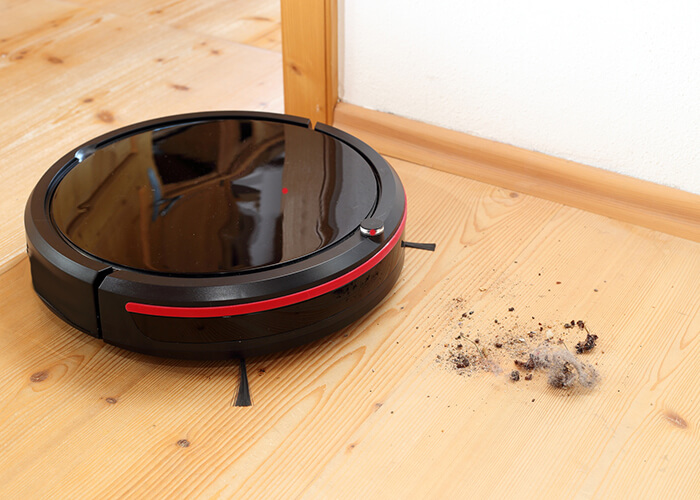
Vacuum robots can be a massive relief if you suffer from allergies and rely on frequent vacuuming. Even if it doesn’t reach all the corners of your home or give it a deep clean, it can considerably reduce the amount of dust in your home. For people with pets, a robot vacuum can be both a blessing and a curse: while it will pick up animal hair, our four-legged friends sometimes won’t accept a buzzing intruder into their territory. Ultimately, even if you have a robot vacuum cleaner, you’ll still want to buy a standard vacuum cleaner whose power, versatility, and ability to deep clean is unmatched.
Advantages
- Work independently and automatically
- Continuously remove coarse dirt
- Clean hard to reach places
- Quiet in operation
- No dust bags necessary
Disadvantages
- Helpless when it comes to high doorsteps
- Problems with full, small rooms
- Mediocre suction power
- Relatively low battery power
- Low capacity
- Comparatively expensive
A question of hygiene – bagged or bagless?
When choosing between vacuum cleaners, you don’t just have to think about the overall design but also how the vacuum collects dust. There are two methods: bagged vacuum cleaners and bagless vacuum cleaners.
Bagged vacuum cleaners: the powerful ones
Bagged vacuum cleaners collect the dirt they suck up in an air-permeable container. With a market share of around 70%, they are still ahead of bagless vacuums. In these models, a suction turbine draws in the air. It travels through the suction nozzle, the suction tube, and the flexible suction hose and enters the bag, which filters out and collects the dirt it contains.
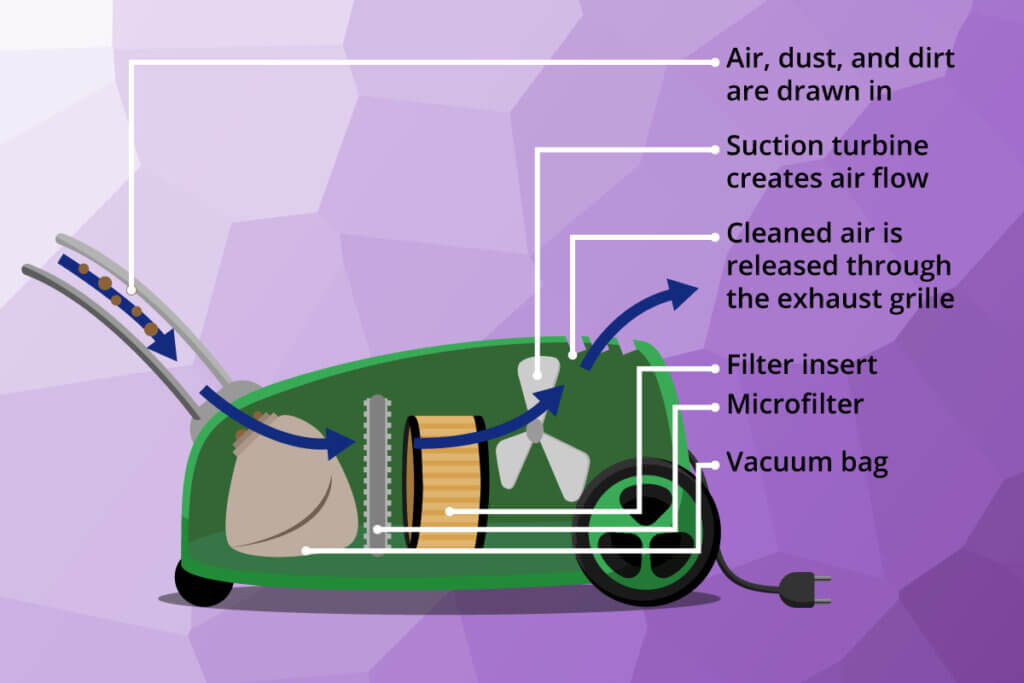
After the air has passed through the bag and released the coarse-grained dust in the bag, it passes through the exhaust filter for the smallest particles. Through an exhaust air grille, the vacuum cleaner releases air, after it has been cleared of dust particles.
Vacuum cleaner bags have the impossible task of accommodating two incompatible properties. Their cover should be so permeable to air that it offers little resistance and doesn’t negatively affect the suction power. At the same time, it should hold even the finest dust particles in the bag. A distinction is made between bags consisting of two to five layers of differently grained paper and those made of nonwoven fabric (fleece).
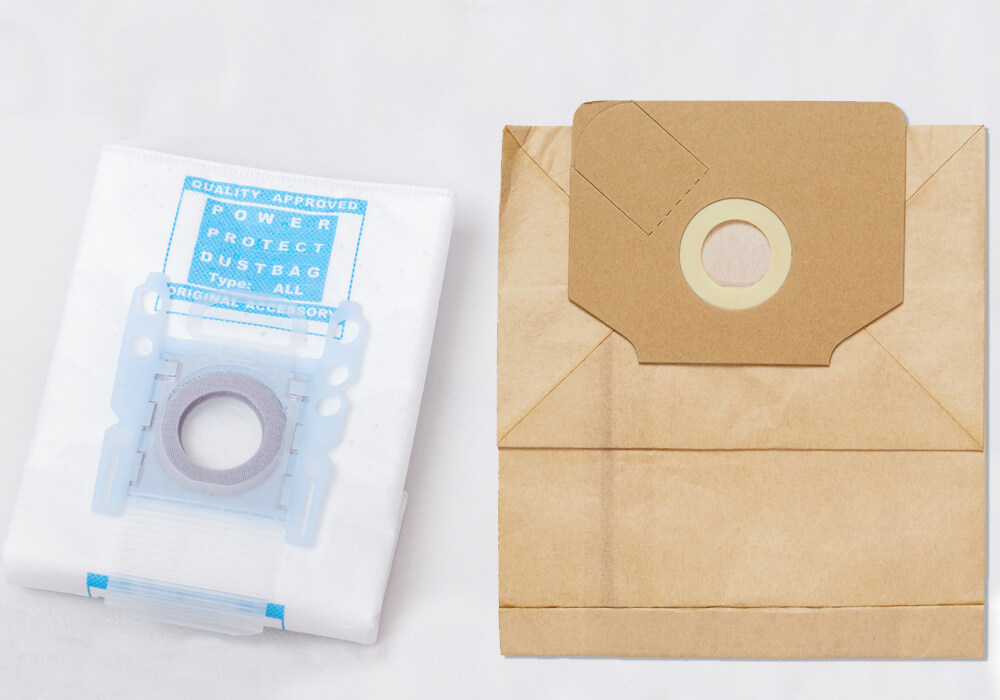
The classic bags consist of multiple layers of differently coarse paper and are very hygienic. Thanks to the recyclable material, they are more environmentally friendly than the alternative made of special fleece with plastic components. However, the fleece bags are capable of separating up to 99.9% of dust particles.
Vacuum bag chaos!
Finding the right bag for your vacuum cleaner is anything but easy: The approximately 8200 different vacuum cleaner models on the market are almost matched by 1200 different bag types. The problem is that there is no DIN standard for vacuum cleaner bags. Before buying a bagged vacuum cleaner, make sure to buy fitting bags.
Bagged vacuums, especially in combination with high-quality bags, are a good choice for allergy sufferers, as they can be disposed of without coming into contact with dust. As a rule, they also operate more quietly than cyclone models (58 to 70 dB). However, the suction power of bagged vacuums can fluctuate based on how full the bag is. The fuller the bag is, the weaker the suction power will get, as the accumulated dust offers resistance to the passing air. It is also possible that they let unpleasant odours seep through the exhaust, blowing them out into the room.
With a price range of £30 to about £400, bagged vacuum cleaners are somewhat cheaper than the bagless alternatives. However, consumers should also factor in the follow-up costs that come with buying bags on a regular basis.
Advantages
- Less expensive than bagless models
- Quieter than cyclone models
- Slightly stronger suction power
- Optimal filter performance possible
- Allergy friendly thanks to hygienic bag disposal
Disadvantages
- Additional purchase of bags necessary
- Decreasing suction power with fuller bag
- Higher weight
- Unpleasant odour of the exhaust air possible
Bagless vacuum cleaner: the environmentally friendly alternative
The advantages of bagless vacuum cleaners are that they require no consumables such as bags or filters and provide consistently high suction power even when the dust container is almost full. Moreover, since the air doesn’t pass through the collection container, no unpleasant odours are emitted. The disadvantage is that you have to empty the container regularly. This can bring you into contact with dust, which is a big drawback for allergy sufferers.
Bagless vacuum cleaners do not collect the dust in a bag but in a dust container. Hence, since there is no bag, there also is no bag filter. Instead, most bagless models separate dust and dirt particles using the cyclone principle. A distinction is made between single-cyclone and multi-cyclone vacuum cleaners, as well as water vacuum cleaners as a special form.
Single-cyclone vacuum cleaners
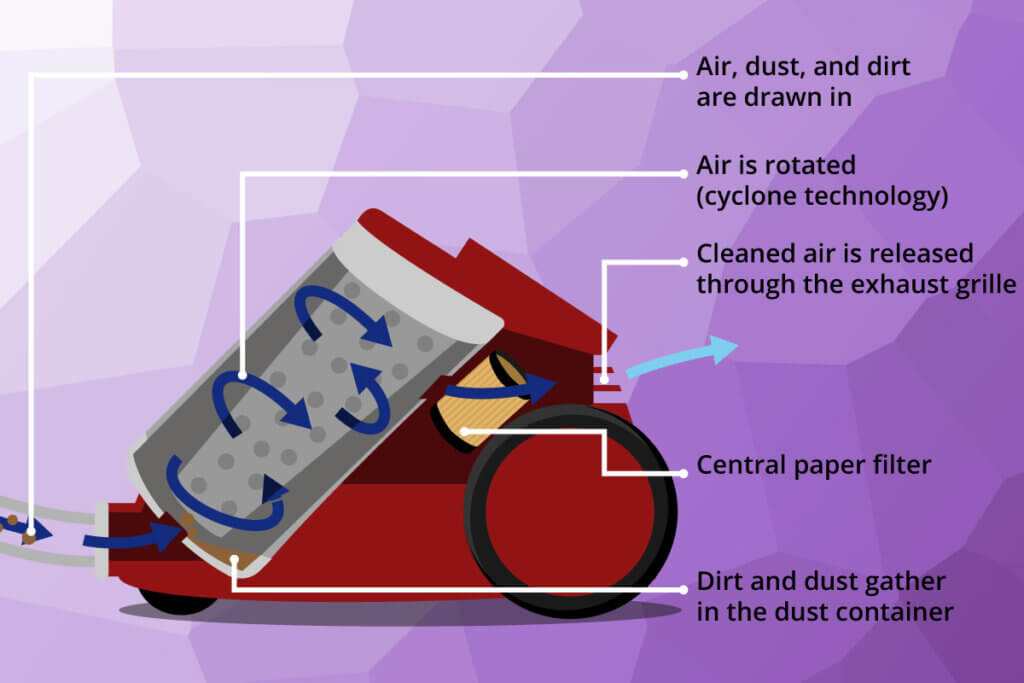
The cyclone principle is simple: Air flows into a cone-shaped container. There, a cyclone is created in which the centrifugal forces push the heavier dust particles to the edge and collect them in the collection container. The clean air in the centre of the container is released upwards through the exhaust grill. Since the air only passes through this one cone, finer dirt particles are not completely removed. In addition, the exhaust air flows through a central paper filter, which the user must clean regularly to prevent the vacuum from losing suction power.
Does it still make sense today?
Since cleaning the paper filter is relatively time-consuming and not very user-friendly, a multiple cyclone vacuum cleaner was developed by Dyson as early as the 1980s and is now the industry standard.
Multi-cyclone vacuum cleaner
The principle of operation of the modern multi-cyclone vacuum cleaner is basically the same as that of single-cyclone ones. However, after the air is discharged from the first cyclone, it passes through several smaller cyclones in the second cleaning phase. These have a smaller diameter and achieve a higher rotational speed. As a result, smaller dirt particles are separated more effectively. Thus, the more cyclones are used in the vacuum cleaner, the lower the proportion of fine dust in the exhaust air. A central paper filter is not necessary in a multi-cyclone vacuum cleaner.
In addition, multi-cyclone vacuum cleaners tend to be more expensive to buy and noisier to operate. Depending on the model, a new purchase of such a device costs between £35 and £1,400.
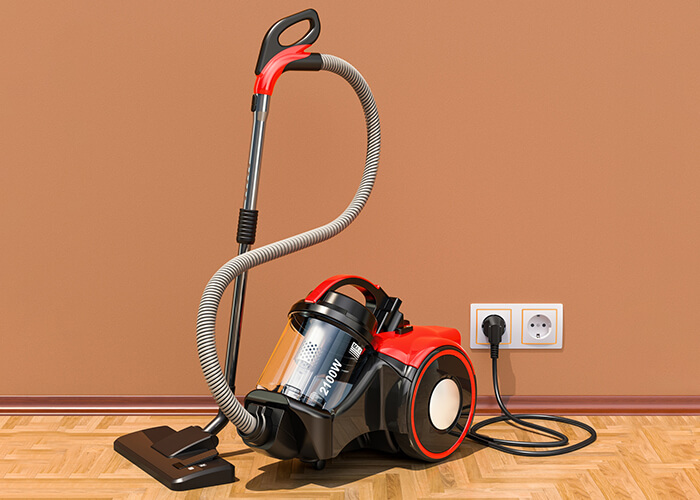
Advantages
- No loss of suction power
- No need to buy bags and filters
- Less weight
- Odourless exhaust air
Disadvantages
- Loud in operation
- Not allergy-friendly due to dust turbulence when emptying the container
- More expensive to purchase
Water vacuum cleaner – the hygienic ones
Water vacuums are a special form of bagless vacuum and should not be confused with wet vacuums, which are used to suck up liquids. Instead of a dust bag, they have a water tank through which the dust-laden air passes. Dust and dirt particles remain in the water, the cleaned air escapes through an additional exhaust filter; the water thus takes over the filtering function.
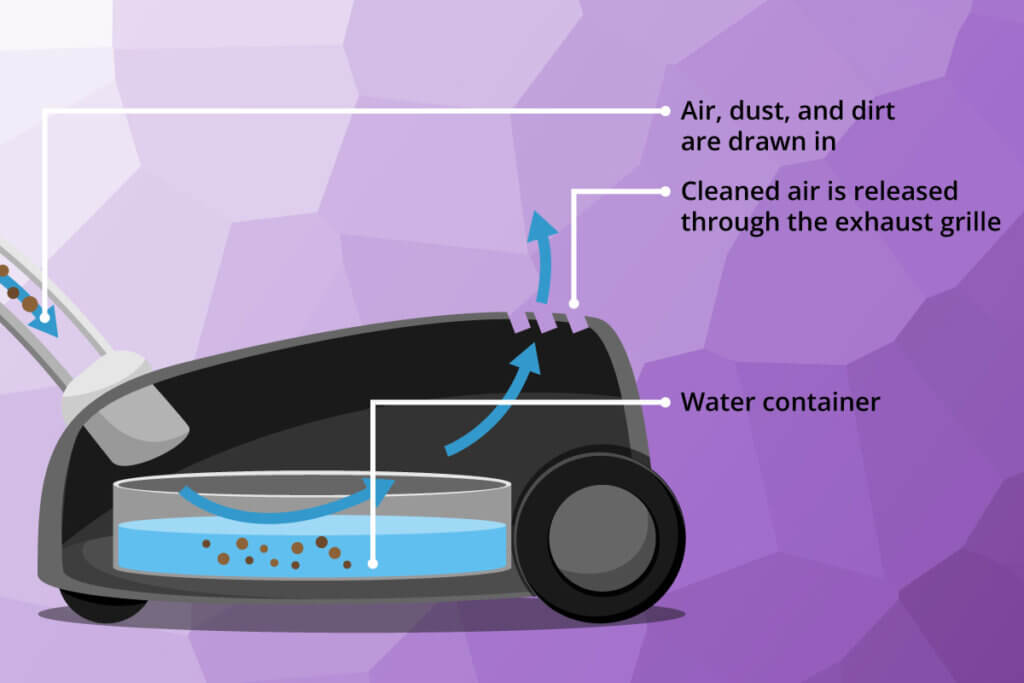
The cleaning effort is relatively high with water vacuums, as you have to empty the dirty water after each cleaning process to prevent mould, bacteria, and odour formation. By adding scented oils to the water tank, the room air can be filled with pleasant fragrances.
There is no loss of suction power with water vacuums. However, the water makes them relatively heavy, which impairs handling in larger flats or multi-storey homes. However, they are highly recommended for allergy sufferers: Although contact with dust when emptying the tank cannot be ruled out completely, the risk is significantly lower than when disposing of a dust bag or emptying the dust collection container, as the dust is mixed with the water. With a cleaning efficiency of up to 99%, the water vacuum even improves the overall indoor climate. A new water vacuum is available for £40 to £400. For a high-quality device you can expect to spend about £150.
Advantages
- No loss of suction power
- No bag and filter purchase necessary
- Odourless exhaust air
- Allergy friendly
Disadvantages
- Frequent emptying and filling of the water tank necessary
- Susceptible to mould and germ formation if handled incorrectly
- High weight
How do vacuums filter?
The filtering systems are central to the vacuum cleaner’s function. By sucking in the dust-laden air as well as expelling the vacuumed air through the exhaust, a vacuum swirls the air in the room. In doing so, it may not only stir up the dust on surfaces and in the air, but also allergens, bacteria, and small particles that are already in the vacuum. To prevent this, fine and multi-staged filtering systems are needed.
What filters are used in vacuum cleaners for domestic use?
In bagged vacuum cleaners, the bag itself is the first and strongest filter. In water vacuums the water tank takes over this function. In multi-cyclone vacuum cleaners, the separation of the cyclones makes the filtering stage redundant. But these are not the only filter stages built into vacuums: Fine dust and microparticles are usually caught by an additional exhaust filter. In addition, a separate motor filter protects the motor from dust particles and larger particles such as small gravel or paper clips that could enter the motor in the event of a bag tear.
Exhaust air filter: microfilter or HEPA filter?
Exhaust air filters are the last filtering stage in the vacuum. They are located behind the motor and in front of the outlet for the exhaust air. Modern fleece vacuum cleaner bags are able to remove up to 99.9% of the particles from the suction air. However, fine dust particles can still be mixed in the exhaust air. The task of the exhaust air filter is to catch precisely these fine dust particles and to expel the exhaust air in a state at least as pure as the room air. Exhaust air filters are not only found in bagged vacuums, but also in cyclone ones.
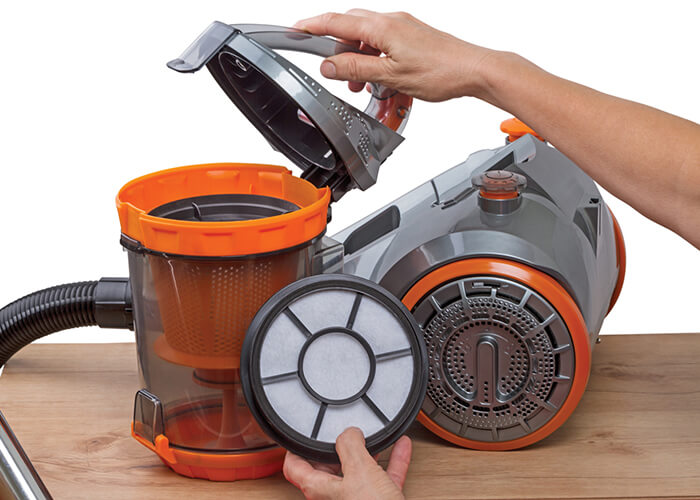
You can choose between a micro filter and a HEPA filter (High Efficiency Particulate Air Filter):
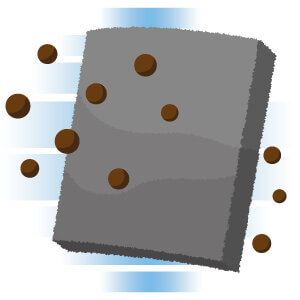
Microfilter
Microfleece filters have a coarser grain than HEPA filters. Therefore, they allow somewhat coarser dust particles to pass through, but offer excellent dust retention nonetheless, provided a good dust bag is used.
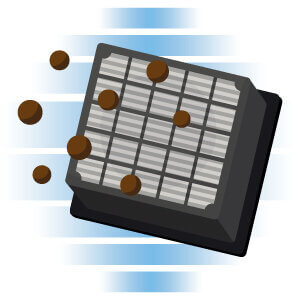
HEPA filter
The HEPA filters belong to the so-called depth filters. They separate particles with a diameter of less than one micrometre. This means they are also able to filter out bacteria, viruses, pollen, mite eggs and droppings, aerosols, and smoke particles from the exhaust air. HEPA filters exist in two filter classes, namely H13 with 99.95% and H14 with a filtration efficiency of 99.995%. Thus, they are absolutely recommended for allergy sufferers.
What to do if the filters are dirty
During regular operation of a vacuum cleaner, no matter what type, the filter systems will inevitably become clogged with dirt and become blocked. This is accompanied by a loss of suction power and reduced filter performance. It is often sufficient to remove the filters and clean the visible dirt. However, the filters will have to be replaced at some point.
It is not possible to give a general answer as to how often to change the filters, as this depends heavily on factors such as the frequency of use, the degree of soiling, the vacuum cleaner model, and the size of the home. In general, however, it makes sense to check the filters for dirt every month and, in the case of bagged vacuums, to change the exhaust air filter twice a year and the motor filter once a year. Users should change the exhaust air filter in cyclone vacuum cleaners at least once a year.
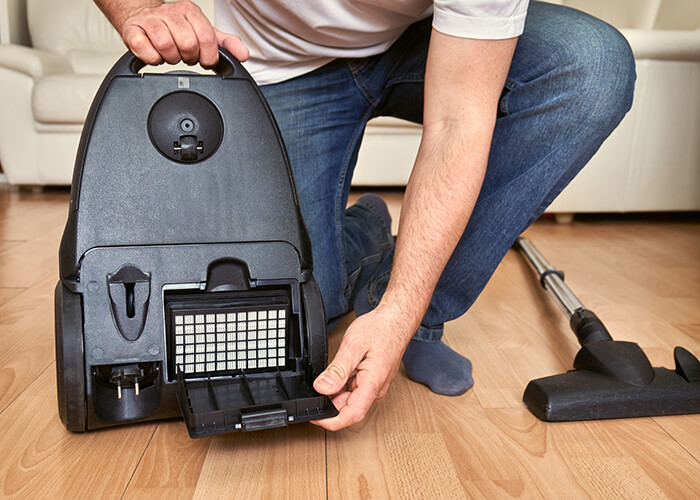
What functions should a vacuum cleaner have?
The following functions are important for the purchase decision:
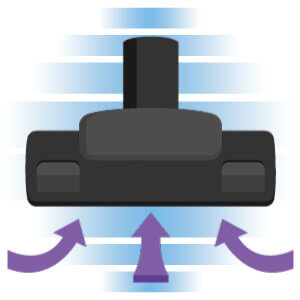
Control over suction power
Most vacuums have a control dial or a switch to adjust the desired suction power. For slightly soiled hard floors, you can select a lower suction power with this control and thus save electricity. More expensive appliances even offer an automatic suction power control that adjusts the suction power to the floor.
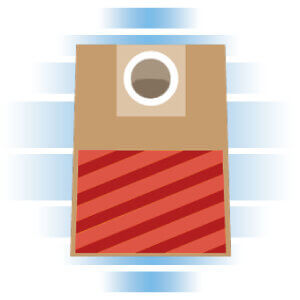
Fill level indicator
This indicator allows you to see how full the vacuum bag or container is. In this way, you know when it is necessary to change the bag or empty the container before suction power is lost. You also do not have to open the vacuum cleaner in order to check the fill level, which could lead to dust particles escaping.
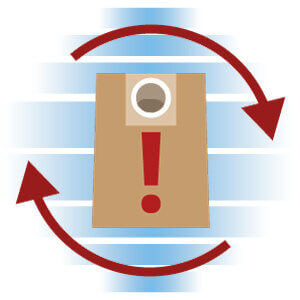
Filter change indicator
Exhaust air filters become dirty with use, which means that they no longer provide the desired performance. This not only affects the purity of the exhaust air, but also the suction power. High-quality vacuums contain filter change indicators that indicate when you should change the filter. Thus, you do not have to check yourself. A sensor constantly determines the functionality of the filter.
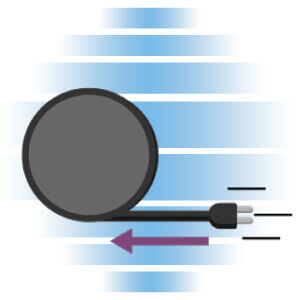
Cable rewinder
If you decide to buy a vacuum with a cable, an automatic cable rewinder makes sense. This guarantees that the cable is stored in a compact and space-saving manner and can easily be rolled out to the desired length. This means that there is no long cable lying around on the floor during vacuuming. After vacuuming, the user conveniently reels in the cable via a foot-operated switch without having to bend down or manually wind the cable.
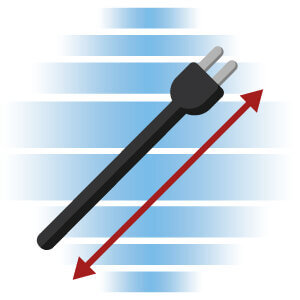
Action radius
While the action radius of cordless vacuums is unlimited, the cable length of mains-powered devices is a decisive purchasing factor. You should therefore figure out in advance which cable length you need for your home, so you don’t have to change the socket too often.
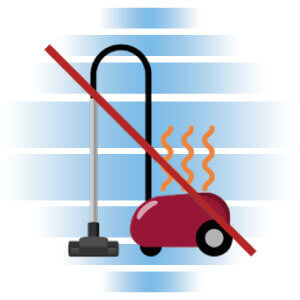
Safety features
The overheating protection and the automatic switch-off are summarised under the umbrella term “safety features”. These are extremely useful because they ensure that the vacuum switches itself off in an emergency before it overheats and, in the worst case, damages the motor. Such overheating occurs when the motor filter fails and impurities enter the motor compartment through a defective dust bag or if the filters are clogged in such a way that the exhaust air cannot escape.
What accessories should be included?
When you buy a new vacuum, it is often not only the device itself that is included in the delivery, but also a number of useful accessories. These include various suction attachments (nozzles and brushes for different purposes), filters, and, if it is a bagged vacuum cleaner, dust bags. The accessories also include the suction tube. Buyers should make sure that it is an extendable and adjustable telescopic tube so that people of different heights can work with the vacuum cleaner.
The following brief overview explains which nozzles and brushes are common and what they are used for:
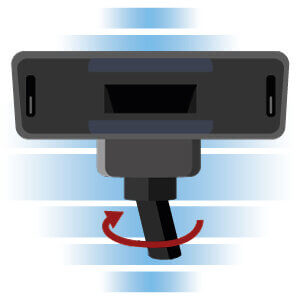
Floor nozzle
The floor nozzle, also known as a combination or universal nozzle, is the standard nozzle on a vacuum cleaner. Depending on whether its bristle strips are retracted or raised, it is suitable for vacuuming smooth floors such as laminate and tiles or carpeted floors. Thanks to a joint at the base of the hose or handle, the nozzle’s joint can be tilted so that the user can easily vacuum under sofas or shelves that are not too low.

Crevice nozzle
The long, slim nozzle is ideal for cleaning narrow crevices, for example between sofa cushions, in the car, or behind furniture. It is usually part of the standard equipment.

Upholstery nozzle
The nozzle is designed for vacuuming upholstered furniture, car seats, mattresses, or other smooth textile surfaces. It resembles a miniature version of the standard nozzle and is usually included in the scope of delivery. Soft, short bristles called thread lifters brush the fabric and pick up lint, threads, and hair.
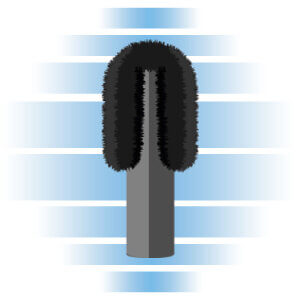
Radiator nozzle
This practical radiator nozzle, which is not always included, makes it possible to clean finned radiators easily. Its bristles are very firm and reach the barely accessible spaces between the radiator ribs. In addition, it can also be used for cleaning crevices.
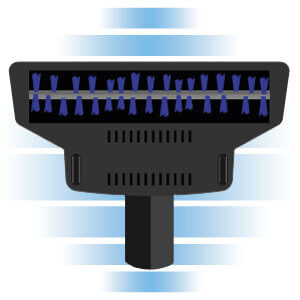
Turbo brush
A must-have for pet owners, the turbo brush features spinning bristle rollers. Driven by the airflow, these rollers straighten the pile of the carpet, allowing you to better pick-up pet hair, threads, dried soil, and other dirt. Turbo brushes are also excellent for cleaning upholstery or car seats.
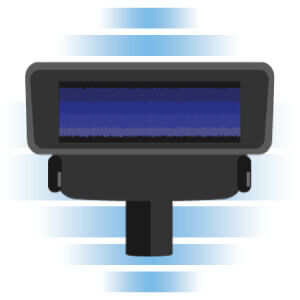
Electric brush
Although it works in a similar way to the turbo brush and is also not part of the standard range, its purchase is worthwhile for pet lovers. The rotating brushes are turned independently by a separate electric motor and remove even stubborn, bristly pet hair and dust mites. To make handling easier, it makes sense to pay attention to height-adjustable brush rollers.
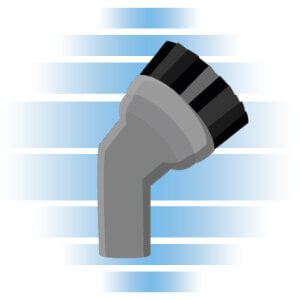
Furniture brush
The small, versatile brush is often included in the scope of delivery. In the past, the bristles were often made of horsehair, but today mostly soft plastic bristles are used. Its design is often triangular or rectangular and enables it to vacuum scratch-sensitive surfaces as well as angled corners and niches. Textured wallpaper, keyboards, books, lampshades, and radiators are also possible surfaces you can vacuum with a furniture nozzle.
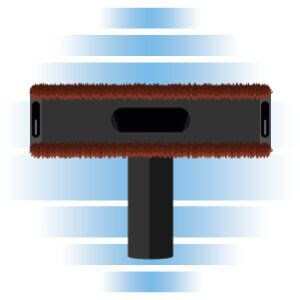
Hard floor nozzle
This hoover nozzle was specially designed for hard, large-surface floors. Extra-wide versions can clean stone floors or tiles quickly and thoroughly. Some hard floor nozzles are also suitable for parquet. Although the hard floor nozzle is not included in the standard scope of delivery, it can be a worthwhile investment depending on the area of use.
Image 1: © FinalCheck | Image 2: © peterschreiber.media / stock.adobe.com | Image 3: © monticellllo / stock.adobe.com | Image 4: © MP2 / stock.adobe.com | Image 5: © Prostock-studio / stock.adobe.com | Image 6: © rupbilder / stock.adobe.com | Image 7: © FinalCheck | Image 8: © Mary's / stock.adobe.com & © Andrzej Tokarski / stock.adobe.com | Image 9: © FinalCheck | Image 10: © alexmlx / stock.adobe.com | Image 11: © FinalCheck | Image 12: © ra3rn / stock.adobe.com | Images 13–14: © FinalCheck | Image 15: © Georgy Dzyura / stock.adobe.com | Images 16–29: © FinalCheck

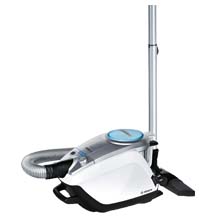
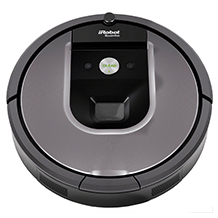
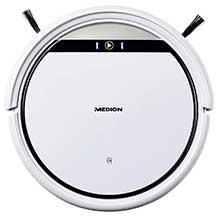
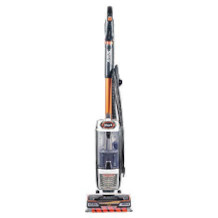
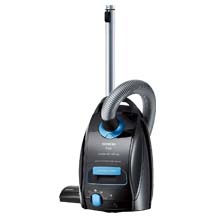
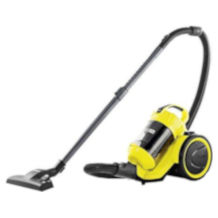
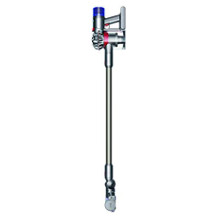
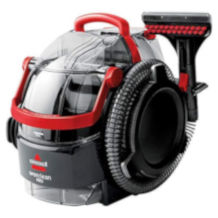


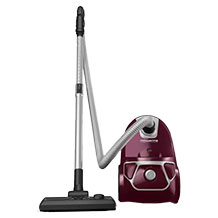
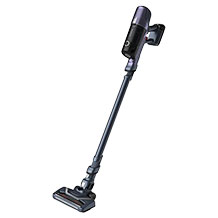











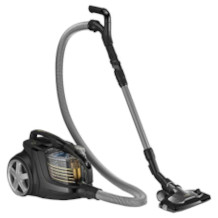



 19,000 reviews
19,000 reviews









